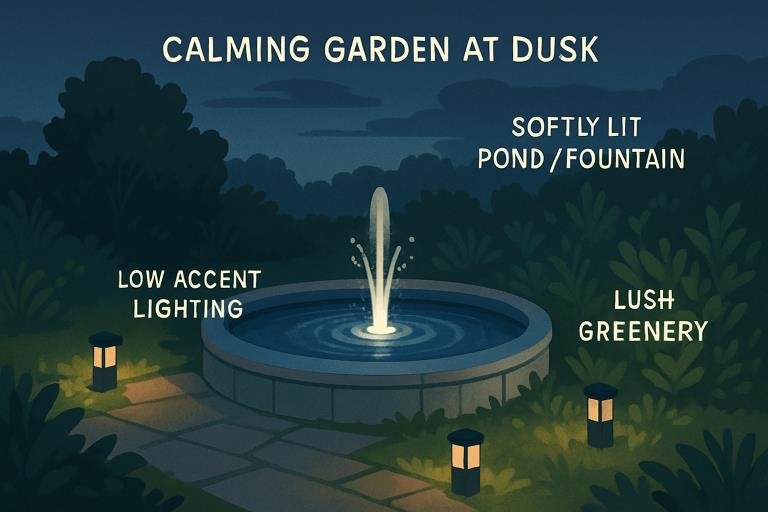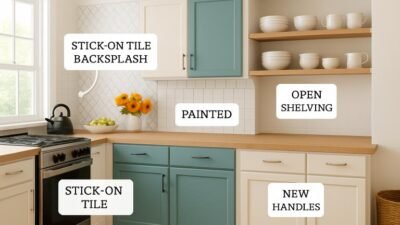Key Takeaways
- Combining water features and lighting transforms outdoor spaces, increasing both beauty and functionality.
- Sustainable design and regular maintenance are essential for long-lasting, eco-friendly solutions.
- Layered lighting and well-chosen water elements enrich the outdoor ambiance and extend usability into the evening.
The Harmony of Water and Light Outdoors
Modern landscape design is about creating a functional and inspiring environment year-round, using water features and lighting to enhance both sensory and practical aspects. Whether for relaxation or entertainment, the right balance of water and light defines outdoor living. For homeowners in North Carolina, effective irrigation also plays a foundational role, ensuring that gardens and landscapes thrive alongside these enhancements. Water features like fountains, ponds, and waterfalls add serenity and function to gardens, masking noise and attracting wildlife like birds and butterflies, enhancing biodiversity and seasonal appeal.
Choosing and Integrating Water Features
Choice of water feature varies by landscape size and purpose. Urban gardens suit wall-mounted fountains or urns, while larger yards can hold streams or ponds. Placement is key—water should be visible from main seating areas and walkways for continual visual and auditory appeal. Proper installation and recirculating pumps prevent leaks and stagnation, with more tips on sustainable garden design available in published guides. Lighting adds beauty at night, turning water features into glowing focal points and enhancing ambiance.
Layered Outdoor Lighting for Safety and Ambiance
A well-lit garden balances beauty and safety with functional lighting like overhead fixtures, pathway lights, and spotlights on steps. Use accent and mood lighting to highlight features, layered at different heights to add depth and reduce shadows. Shield bulbs to prevent light pollution and use timers or smart controls for efficiency. For eco-friendly outdoor lighting tips, consider exploring thoughtful approaches to lighting design, which can enhance ambiance while keeping energy use low. Smart planning ensures your outdoor space feels welcoming, safe, and sustainable throughout the year.
Lighting Water Features: Creating a Nighttime Focal Point
Water and light interaction after dark can be captivating. Submersible LED lights in ponds or fountains make water shimmer, while surface spotlights highlight movement and create enchanting reflections on nearby walls or plants. Dynamic lighting, like changing colors or synchronized dimmers, fosters a lively or peaceful ambiance for gatherings or quiet evenings. When designing illuminated water features, consider viewing angles from inside and across the landscape. Subtle up-lighting adds depth, and floating solar lights bring whimsy and efficiency for ponds or pools. Choose weatherproof, low-voltage fixtures for durability and minimal upkeep.
Sustainable and Low-Maintenance Solutions
As environmental awareness grows, homeowners seek sustainable outdoor solutions. LED lighting lowers energy use and needs fewer replacements. Solar lights are great in sunny areas, harnessing sunlight for night lighting. Water features benefit from managing water, covering ponds to reduce evaporation, and collecting rainwater. Regular care—removing debris, checking pumps, and monitoring algae—extends lifespan. Using aquatic plants and beneficial bacteria can improve water balance and reduce chemicals.
Tips for Achieving Outdoor Harmony
To create an inviting landscape, develop a comprehensive plan that balances aesthetics with functionality, focusing on focal points, flow, and maintenance. Utilize native, drought-resistant plants near water features to enhance beauty while conserving water. Incorporate various types of lighting—functional, accent, and decorative—for an adaptable ambiance. Regular checks on outdoor systems, including irrigation and lighting, are conducted to prevent issues and maintain the landscape effectively.
Conclusion
Thoughtful integration of water features and lighting can turn any outdoor space into a dynamic retreat. By planning for sustainability and ongoing care, homeowners enjoy years of beauty, relaxation, and function. Whether your vision is a peaceful sanctuary or an entertainer’s paradise, balancing these elements invites nature in and extends your living space—day and night.



